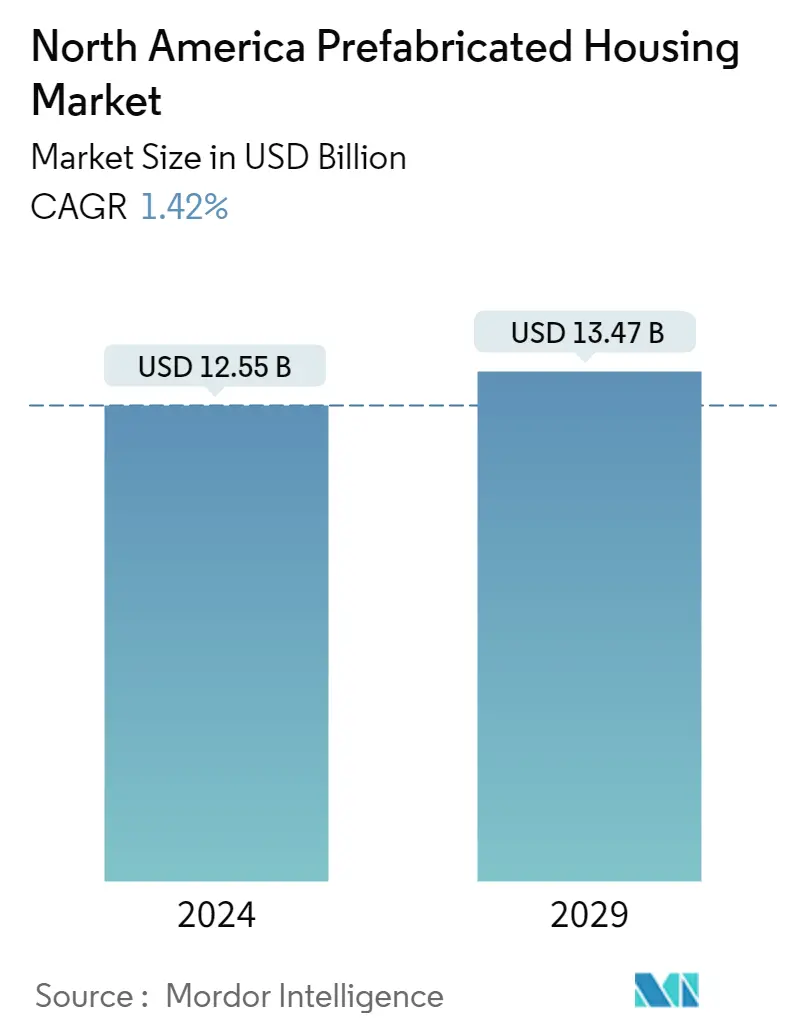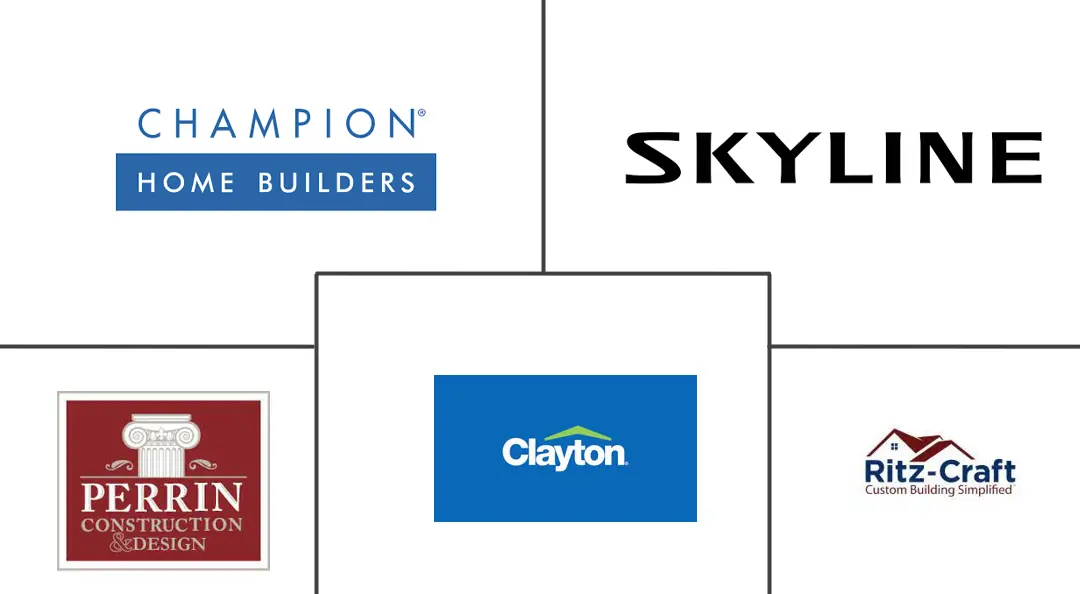Market Size of North America Prefabricated Housing Industry

| Study Period | 2019 - 2029 |
| Base Year For Estimation | 2023 |
| Market Size (2024) | USD 12.55 Billion |
| Market Size (2029) | USD 13.47 Billion |
| CAGR (2024 - 2029) | 1.42 % |
| Market Concentration | Low |
Major Players
*Disclaimer: Major Players sorted in no particular order |
Need a report that reflects how COVID-19 has impacted this market and its growth?
North America Prefabricated Housing Market Analysis
The North America Prefabricated Housing Market size is estimated at USD 12.55 billion in 2024, and is expected to reach USD 13.47 billion by 2029, growing at a CAGR of 1.42% during the forecast period (2024-2029).
- Due to COVID-19 restrictions and lockdowns, many construction projects were delayed or canceled, and many construction companies shut down their projects. During the pandemic, the best solution was to use prefabricated buildings instead of traditional construction, which requires a lot of people. COVID-19 also had an effect on the market because it slowed down the production of raw materials, messed up the supply chain, slowed down trade, caused construction demand to drop, and made people less interested in starting new projects. But the number of COVID-19 cases and the need for buildings and units for healthcare and quarantine made more people want modular buildings.
- Most of the work in the North American construction industry is in reorganizing and remodeling, which require quick "turnkey" solutions. The region is a hub for small to large-scale modular service providers. The introduction of numerous government initiatives for promoting the construction of green buildings across the United States is also catalyzing the market. Moreover, the high prevalence of extreme cold weather in the region, leading to shorter days and heavy snowfall that inhibit on-site construction methods, is also propelling the need for modular construction. Nonresidential prefabricated building system demand in the US is expected to increase during the forecast period. The recovery in office and commercial construction, coupled with continued gains in institutional, industrial, and agricultural construction, will provide opportunities.
- The market for prefabricated homes has a lot of potential, especially in North America, where more and more people are looking for affordable, high-quality homes. Prefabricated buildings provide homeownership at a lower cost than houses built on-site, which is driving the market's growth. A prefabricated house makes it easy to use different interior and exterior architectural styles that can't be used in a house built on-site. During the forecast period, the North American prefabricated housing market could grow even more if technology keeps getting better and companies focus on giving customers good service.
- There is a shortage of affordable housing in the United States. Due to the high cost and long time required to build on-site houses and more young consumers wanting to own their own houses, this problem is expected to continue to exist. The shortage of on-site-built houses will provide market opportunities for prefabricated house manufacturers to build affordable single-family houses at a lower cost and in less time while providing convenience facilities, such as large kitchens and multiple bathrooms.
